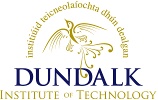Doyle, Brian C. and de Eyto, Elvira and Dillane, Mary and Poole, Russell and McCarthy, Valerie and Ryder, Elizabeth and Jennings, Eleanor (2019) Synchrony in catchment stream colour levels is driven by both local and regional climate. Biogeosciences, 16 (5). pp. 1053-1071. ISSN 1726-4170
Preview |
PDF
Download (4MB) | Preview |
Abstract
Streams draining upland catchments carry large quantities of carbon from terrestrial stocks to downstream freshwater and marine ecosystems. Here it either enters long-term storage in sediments or enters the atmosphere as gaseous carbon through a combination of biotic and abiotic processes. There are, however, increasing concerns over the long-term stability of terrestrial carbon stores in blanket peatland catchments as a result of anthropogenic pressures and climate change. We analysed sub-annual and inter-annual changes in river water colour (a reliable proxy measurement of dissolved organic carbon; DOC) using 6 years of weekly data, from 2011 to 2016. This time-series dataset was gathered from three contiguous river sub-catchments, the Black, the Glenamong and the Srahrevagh, in a blanket peatland catchment system in western Ireland, and it was used to identify the drivers that best explained observed temporal change in river colour. The data were also used to estimate annual DOC loads from each catchment. General additive mixed modelling was used to identify the principle environmental drivers of water colour in the rivers, while wavelet cross-correlation analysis was used to identify common frequencies in correlations. At 130 mg Pt Co L−1, the mean colour levels in the Srahrevagh (the sub-catchment with lowest rainfall and higher forest cover) were almost 50 % higher than those from the Black and Glenamong, at 95 and 84 mg Pt Co L−1 respectively. The decomposition of the colour datasets revealed similar multi-annual, annual and event-based (random component) trends, illustrating that environmental drivers operated synchronously at each of these temporal scales. For both the Black and its nested Srahrevagh catchment, three variables (soil temperature, soil moisture deficit, SMD, and the weekly North Atlantic Oscillation, NAO) combined to explain 54 % and 58 % of the deviance in colour respectively. In the Glenamong, which had steeper topography and a higher percentage of peat intersected by streams, soil temperature, the log of stream discharge and the NAO explained 66 % of the colour concentrations. Cross-wavelet time-series analysis between river colour and each environmental driver revealed a significant high common power relationship at an annual time step. Each relationship however, varied in phase, further highlighting the complexity of the mechanisms driving river colour in the sub-catchments. The estimated mean annual DOC loads for the Black and Glenamong rivers to Lough Feeagh were similar at 15.0 and 14.7 t C km−2 yr−1 respectively. The important role of past and current precipitation and, in particular, temperature emphasises the vulnerability of blanket peatland carbon stores to projected climate change and highlights the interaction of local and regional climate in controlling aquatic carbon export. Our results show that water colour (and hence DOC) concentrations can vary considerably between neighbouring catchments and also that regional-scale climatic drivers control the trends in intra- and inter-annual flux of DOC through the system. The combination of locally determined concentrations and regionally controlled fluxes produces aquatic DOC loads that vary over both the annual cycle and over multiple years.
| Item Type: | Article |
|---|---|
| Uncontrolled Keywords: | stream catchment, climate, environment, freshwater |
| Subjects: | Science |
| Research Centres: | Centre for Freshwater and Environmental Studies |
| Depositing User: | Lorna O Connor |
| Date Deposited: | 11 Feb 2020 14:54 |
| Last Modified: | 11 Feb 2020 14:54 |
| License: | Creative Commons: Attribution-Noncommercial-Share Alike 4.0 |
| URI: | https://eprints.dkit.ie/id/eprint/674 |
Actions (login required)
 |
View Item |
Downloads
Downloads per month over past year

